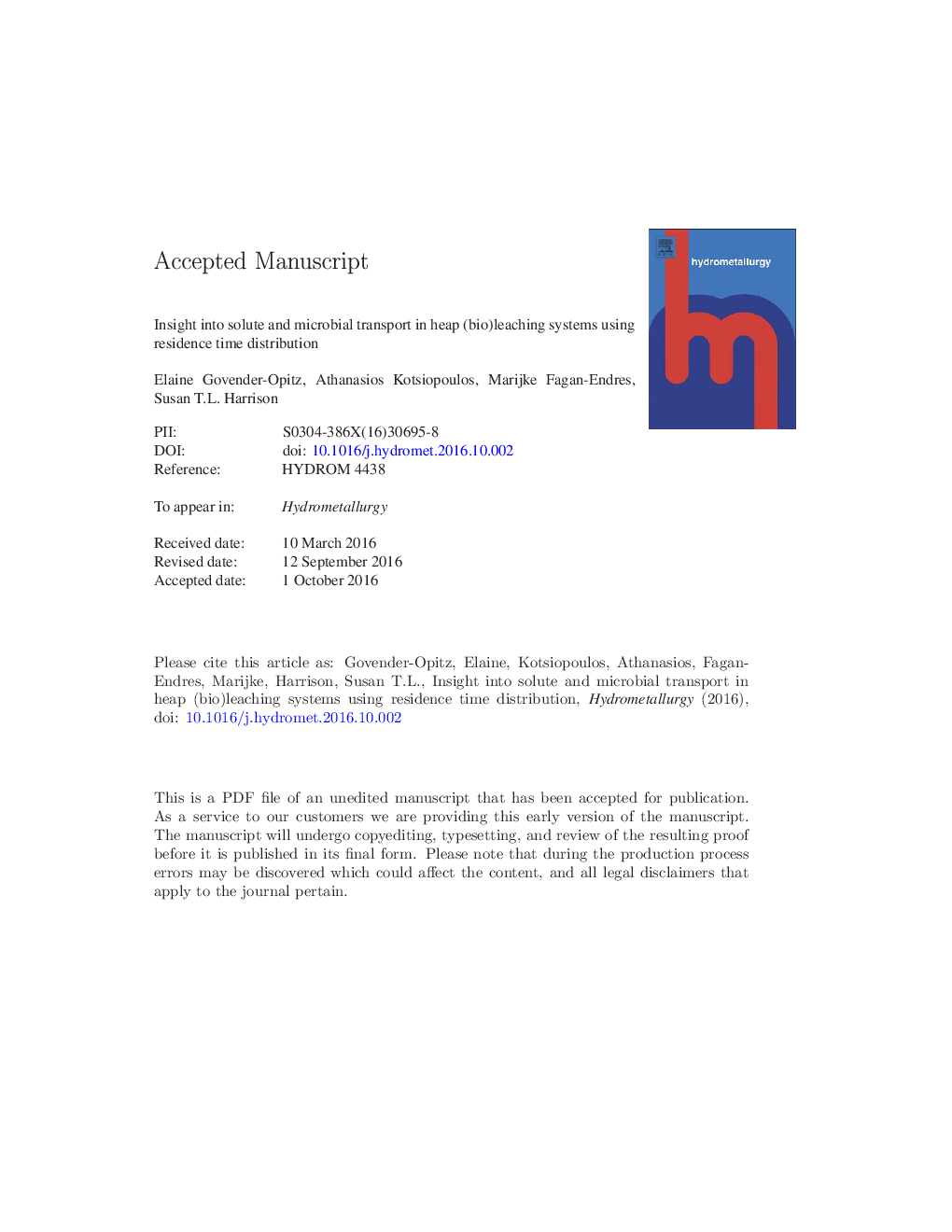| Article ID | Journal | Published Year | Pages | File Type |
|---|---|---|---|---|
| 4769074 | Hydrometallurgy | 2017 | 18 Pages |
Abstract
Residence time distribution experiments were performed using chemical and microbial tracers to elucidate solution transport mechanisms within low grade, agglomerated ore beds. Multiple, fixed bed, mini-column reactors were packed with representative grab samples of low grade ore. The tracers were introduced to the ore bed in three ways: as a pulse added with the irrigant, included during agglomeration of the ore, and introduced by submerging the ore bed in tracer solution for a fixed time period. These methods of tracer introduction allowed for the characterisation of flow interchange in packed bed systems, under unsteady state conditions. Dispersion and diffusion of solution through the ore beds were characterised based on the resulting residence time distribution curves. Distinct stagnant and flowing regions within the agglomerated ore bed were observed. Flow characteristics provided information regarding solution exchange between the fast flowing and largely stagnant liquid phases. Increased retention times of both the solute and micro-organisms were noted when the tracer was agglomerated onto the ore surface. This was followed by an increase in solute transport rate from the ore surface driven by concentration gradient.
Keywords
Related Topics
Physical Sciences and Engineering
Chemical Engineering
Chemical Engineering (General)
Authors
Elaine Govender-Opitz, Athanasios Kotsiopoulos, Marijke Fagan-Endres, Susan T.L. Harrison,
